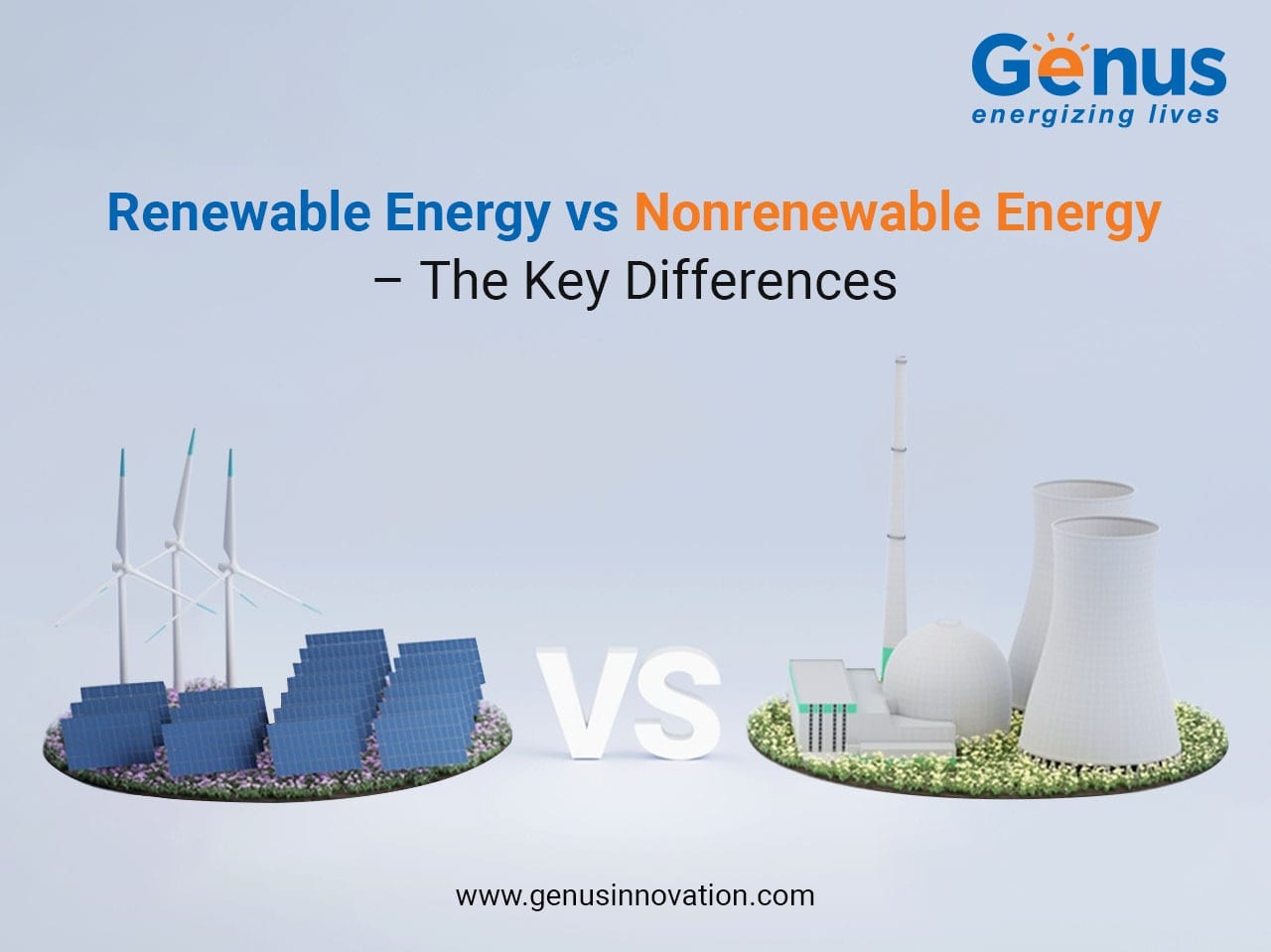Green energy, clean energy, sustainable energy – these terms are nothing but alternative ways to refer to renewable energy. The number of aliases flying around the point toward the apparent urgency surrounding the adoption of this energy resource. And to appreciate the full value of these energy resources, it’s important to know the difference between renewable energy vs. nonrenewable energy. So, here are some important points of difference between renewable and non-renewable energy. Renewable energy resources can’t be depleted or exhausted over time even after continuous utilization. Examples of renewable energy resources include solar energy, wind energy, tidal energy, geothermal energy, etc. The most convenient of them all is solar energy, which is witnessing a fast rise among residential and commercial ecosystems, thanks to the rise of innovation in solar panels and solar charge controller. Resources that can’t be immediately replaced upon depletion, and which take time to replenish are known as non-renewable resources. Fossil fuels like petrol, natural gas, and coal are some examples of non-renewable energy resources. Here are some of the prominent points of differences between renewable energy vs. nonrenewable energy: When you use renewable resources, they leave a minimal carbon footprint and generate lower levels of carbon emissions. For instance, solar energy runs on the rays of the sun, turning the photons incident on the panels into electrical energy. Similarly, wind energy is generated through rotating turbines, converting simple mechanical energy into electricity. As you can see, the sources of both these energies are inherently harmless, and thus, have zero negative effect on the environment. On the other hand, non-renewable resources have a larger carbon footprint, since most fossil fuels are carbon-based. As a result, they release a ton of greenhouse gasses into the atmosphere upon combustion. Want to contribute towards reducing the carbon footprint? Choose Genus’ tubular battery and go sustainable today! The next major point of difference between renewable energy vs. nonrenewable energy is cost. In terms of upfront costs, renewable energy can be a bit more expensive than nonrenewable sources. Why? Because generating energy on renewable technology, which is still in the nascent stages, is comparatively costlier due to the manufacturing and installation expenses. However, when taking into account the slew of savings renewable technologies brings over their lifespan, they beat the cost of nonrenewable resources by a huge margin. Also, with rapidly evolving renewable technologies, the day is not far when these devices come at far more affordable prices. In fact, we at Genus provide the best deals when it comes to solar battery price. The main downside of nonrenewable resources is the time they take to replenish. That’s where the word nonrenewable is derived from. Resources like coal and petroleum take thousands of years to form in nature. And we’re currently using them at a pace far greater than the rate at which they’re formed. In contrast, resources like sunlight, air, and water are available abundantly throughout nature. That’s what makes renewable sources much more reasonable and attractive. So, here you have it, the main points of difference between renewable energy vs. nonrenewable energy. Also Read: Green energy: Definition, Importance, Types, & Differences Explained As you can see, though renewable energy has a high initial installation cost, the savings and sustainability they bring to the table are in a whole other league when compared to non-renewable sources. If you’re looking to switch to renewable energy, Genus Innovation can ensure that your transition goes smoothly. So, why wait? Adopt renewable energy today with Genus Innovation’s range of premium solar products. Connect with us today to learn more. F series Mud Pump are applicable to the requirement of high pump pressure in oilï¬eld and high displacement technology of well drilling with its solid and compact structure,small volume and out-standing operation performance. F series mud pump has a longer stroke and can be operated at a lower stroke, thus improved the water supplying performance effectively and extended the lifetime of expendable parts in the fluid end greatly. The suction Pulsation Dampener has an advanced structure which is reliable to use and can make the pump realize its best suction performance.The power end of F series mud pump adapts combined lubricating system of forced lubrication and splash lubrication. Reliable to lubricate and increased the service life of power end. Fluid End Module,Mud Pump Fluid End Module,Forged Pump Fluid End Module,Standard Mud Pump Fluid End Henan Youlong Petroleum Engineering Technology Co.,Ltd , https://www.youlongenergy.com
What are Renewable Energy Resources?
What are Non-Renewable Energy Resources?
Renewable Energy vs. Nonrenewable Energy
Wrapping Up